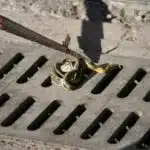As a plumbing expert, one of the most common tasks I encounter is removing toilets. Whether you’re replacing an old toilet with a newer model or performing a bathroom renovation, knowing how to drain a toilet for removal is crucial in ensuring a successful and efficient process.
In this article, we will explore five methods for draining your toilet before removal, each with its own unique advantages and disadvantages. From using a plunger to siphoning the water out manually, I’ll provide step-by-step instructions and helpful tips to make the process as smooth as possible. So if you’re about to embark on a toilet removal project, read on to learn more about how to drain your toilet effectively.
Preparing For Toilet Removal
Assessing space and gathering necessary tools are essential steps to take before removing a toilet. The first step is to ensure that you have enough working space around the toilet to prevent any accidents during the removal process. Clearing out unnecessary items in the bathroom will help create ample room for your work.
It is also important to gather all the necessary tools required for this task. Some of these tools include a pair of pliers, an adjustable wrench, a putty knife, a bucket, and gloves. These tools will aid in loosening and removing the bolts that hold down the toilet firmly onto the floor.
By having an adequate workspace and necessary tools on hand, you can start preparing for the removal of your toilet with confidence. However, before proceeding further, it is crucial to assess the water level in your toilet bowl as this will determine how you proceed with draining it.
Assessing The Water Level
In assessing the water level of a toilet prior to removal, it is necessary to check the water level in the bowl. Identification of a blockage can be determined by flushing the toilet and observing the draining of the water. To confirm the tank fill rate, the ball float assembly should be inspected to ensure it is moving freely and not causing a backup. The float height should also be checked to make sure it is set at the proper level for the toilet to fill correctly. Finally, the flush valve should be checked for proper closure to prevent water from running into the bowl from the tank. By following these steps, the water level of the toilet can be properly assessed prior to removal.
Check Water Level
When it comes to removing a toilet, one of the first things you need to do is assess the water level. Checking the water level will help you determine the best method for draining the toilet and avoiding any potential spills or damage. As a plumbing expert, I recommend using measuring tools such as a tape measure or ruler to accurately measure the water level in your toilet tank.
Another way to assess the water level is by using water displacement. This method involves filling a container with water and then placing it inside the toilet bowl. As you lower the container into the bowl, some of the water will be displaced, causing the water level in the bowl to rise. By measuring this rise in water level, you can determine how much water is currently in your toilet bowl.
It’s important to note that before attempting any method for draining your toilet, you should turn off the water supply valve and flush the toilet several times to remove as much water as possible. Once you have assessed the water level using either measuring tools or water displacement, you can proceed with one of several methods for draining your toilet and preparing it for removal.
Identify Blockage
In assessing the water level of a toilet, it is also important to identify any blockages that may be causing the water level to rise or fall abnormally. Blockages can occur in various parts of the toilet, such as the trapway or flange, and can cause issues with flushing and drainage. As a plumbing expert, I recommend troubleshooting solutions for identifying blockages before proceeding with any removal or repair work.
One method for identifying blockages involves using a plunger to clear any obstructions in the toilet bowl. A plunger creates suction and pressure that helps dislodge and remove blockages. Another solution is using a drain snake or auger to physically remove any debris or objects causing the blockage. It’s important to avoid using harsh chemicals that can damage your pipes and worsen the problem.
In some cases, identifying blockages may require professional assistance from a licensed plumber. If you’ve tried troubleshooting solutions and are still experiencing issues with your toilet’s water level, it’s best to consult an expert who can diagnose and fix the problem efficiently and effectively. By taking these steps, you can ensure proper functioning of your toilet and avoid potential damage or safety hazards.
Confirm Tank Fill Rate
Another crucial step in assessing the water level of a toilet is to check the tank fill rate. The tank fill rate refers to how quickly the toilet tank refills after flushing. If the tank fill rate is too slow, it can lead to low water levels and weak flushes. On the other hand, if the tank fills too quickly, it can cause water to overflow from the overflow tube or into the bowl, leading to wastage and potential damage.
To check the fill rate, start by turning off the water supply valve behind or under your toilet. Then remove the lid from your toilet tank and flush it once while timing how long it takes for the tank to refill completely. Ideally, a standard toilet should take around 2 minutes to fill up. If it takes longer than that or if you notice any irregularities during this process, such as hissing or leaking sounds, then there may be an issue with your fill valve or flapper.
It’s important to note that checking and adjusting your tank fill rate can not only improve your toilet’s performance but also reduce your water bill and conserve water as well. As a plumbing expert, I recommend conducting regular checks on your tank fill rate as part of routine maintenance for your toilet. By doing so, you can ensure optimal functioning of your plumbing system and promote sustainability in your home or business.
Method 1: Plunging The Water Out
As a plumbing expert, one of the most common ways to drain a toilet for removal is by plunging the water out. This technique is easy to perform and requires minimal tools. The goal is to create suction pressure inside the toilet bowl that will suck out all the water.
To start, you need to have a good quality plunger. Choose one that has a flange or rubber lip that fits tightly into the toilet bowl’s drain hole. You can use either a cup plunger or a flange plunger depending on your preference. Then, remove as much water as possible from the bowl using a bucket or any other container you have available.
Next, position the plunger over the drain hole and push down firmly, ensuring it forms an airtight seal with the bowl’s surface. Plunge vigorously up and down for about 15-20 seconds without breaking the seal. Repeat this process until all water has been removed from the toilet bowl.
Common mistakes when plunging include not creating an adequate seal between the plunger and bowl, being too gentle or too rough while plunging, and not removing enough water initially. By following these plunging techniques and avoiding common mistakes, you can successfully drain your toilet for removal.
Transitioning into method 2: Using a shop vac involves more equipment than just a simple plunger but can be highly effective in removing all standing water from your toilet before removal.
Method 2: Using A Shop Vac
Moving on to the next method of draining a toilet for removal, we have method 2: using a shop vac. While this method may seem unconventional, it can be quite effective if done correctly. However, before proceeding with this method, it is crucial to ensure that your shop vac is in good working condition and has been properly maintained.
Shop vac maintenance includes regularly cleaning or replacing the filter, inspecting hoses for cracks or leaks, and checking the motor for any signs of wear and tear. Neglecting these steps can result in reduced suction power or even damage to the machine itself. Therefore, it is essential to take care of your shop vac to ensure its optimal performance.
Aside from draining a toilet for removal, shop vacs have alternative uses such as cleaning up water spills or removing debris from hard-to-reach areas. With their versatile attachments and powerful suction capabilities, they are an asset in any household or workspace. Utilizing them for various purposes not only saves time but also prevents potential accidents from occurring.
With method 2 covered, we move on to the next section where we will discuss another way of draining a toilet for removal: using a bucket and sponge. This traditional approach may seem cumbersome compared to other methods mentioned earlier; however, it can be an effective solution if you do not have access to specialized tools like shop vacs or plungers.
Method 3: Using A Bucket And Sponge
Using a bucket and sponge is another effective method for draining a toilet. This technique requires minimal materials but it can be labor-intensive. To start, you will need to have a bucket that is large enough to hold the water from the toilet bowl. If you do not have a bucket, you can consider some alternatives such as using plastic containers or small trash cans.
Before starting the process, it is important to turn off the water supply valve located behind the toilet. Then, use the sponge to soak up as much water as possible from the bowl and transfer it into the bucket. Once most of the water has been removed, use caution when removing the remaining amount of water to minimize spills.
One thing to keep in mind when using this method is that it may take longer than other methods due to its labor-intensive nature. However, it can be an effective option if you do not have access to other materials or tools. After completing this process, move on to Method 4: Siphoning Water Out for further instructions on how to drain your toilet for removal without calling a professional plumber.
Method 4: Siphoning The Water Out
An interesting statistic to note is that siphoning water out of a toilet is a common technique used by plumbers around the world. This method requires careful preparation and execution to ensure that it is done correctly. The siphoning technique involves using a hose to remove the water from the bowl, preventing any spillage during the removal process.
Before beginning, it is important to assess the water level in the toilet bowl. If there is too much water, it may be difficult to siphon effectively. To reduce the water level, use a cup or container to scoop out excess water until only a few inches remain at the bottom of the bowl. Next, insert one end of a flexible hose into the bowl and suck on the other end until you see water being drawn up into the hose.
Once you see water being drawn up into the hose, quickly place it over an open drain or outside area where you can dispose of the water. The force of gravity will continue to pull water through the hose until all liquid has been removed from your toilet bowl. With this method complete, now we can move on to method 5: using a pump.
Transitioning into method 5: Using a pump, it’s important to note that this approach involves more equipment than previous methods mentioned in this guide. However, pumps are generally efficient and effective for removing large amounts of liquid from toilets quickly and safely.
Method 5: Using A Pump
Using a pump is another effective method to drain a toilet for removal. There are several types of pumps that can be used for this task, including hand pumps and electric pumps. Hand pumps are usually more affordable, but they require more physical effort to use. Electric pumps, on the other hand, are easier to use but tend to be more expensive.
Before using a pump, it’s important to ensure that it’s well-maintained. Pump maintenance is essential for optimal performance and longevity. Regular cleaning and inspection of the pump will help prevent clogs and damages that could result in costly repairs or replacements. It’s also important to follow the manufacturer’s instructions for proper use and maintenance.
Overall, using a pump is an efficient way to drain a toilet for removal. However, safety precautions should always be kept in mind when handling any type of pumping equipment. In the next section, we’ll discuss some important safety tips that you should follow when using a pump to remove water from your toilet.
Safety Precautions To Keep In Mind
Method 5, using a pump, is an effective way to drain a toilet for removal. However, before attempting this method or any of the other methods discussed in the previous sections, it is crucial to understand and implement safety precautions. Just like how a plumber uses safety gear to protect themselves from potential hazards in their line of work, you too must take measures to ensure your safety when removing a toilet.
To start with, make sure you wear appropriate safety gear such as gloves and eye protection when handling the toilet. This will prevent any possible injuries from sharp edges or broken porcelain. Also, remember to turn off the water supply and disconnect the toilet from any electrical sources before beginning the removal process. This reduces the risk of electrocution or water damage.
Furthermore, potential hazards may arise during each stage of the removal process such as lifting and carrying heavy objects or working with sharp tools. It is important to be cautious and take necessary steps to avoid accidents. Keep children and pets away from the work area and use proper lifting techniques when moving heavy items. With these precautions in place, you can safely remove your toilet without any harm caused to yourself or others.
- Wear appropriate safety gear such as gloves and eye protection
- Turn off water supply and disconnect from electrical sources
- Keep children and pets away from work area
- Use proper lifting techniques when moving heavy objects
Next up are step-by-step instructions for each method on how to drain a toilet for removal safely and efficiently.
Step-By-Step Instructions For Each Method
To drain a toilet for removal, there are five methods to choose from. Each method requires specific tools and techniques to complete the task successfully. In this section, we’ll provide step-by-step instructions for each method so that you can find the perfect approach that suits your needs.
The first method is using a plunger. It’s the easiest and most common way to drain a toilet. Ensure the water level of the bowl is low enough before plunging. Place the plunger over the hole in the bowl and apply pressure until the clog loosens. Repeat as necessary until all water is removed.
The second method is using a bucket or siphon to remove water from the bowl. The first step is to turn off the water supply valve behind or near the toilet tank and flush it a few times until no more water flows into the bowl. Use a bucket or siphon to remove any remaining water from inside of it, then place towels on both sides of the bowl to avoid spillage while disassembling it.
Alternative solutions and troubleshooting techniques exist if you encounter problems while implementing these methods. For example, if you encounter stubborn clogs that don’t respond well to plunging, try using an auger or snake tool which can effectively break up debris lodged in pipes leading away from your toilet bowl.
In conclusion, each of these methods can be effective when draining a toilet for removal depending on your situation and available tools at hand. Each technique has its benefits and drawbacks which we will discuss in detail in our subsequent section without writing ‘step.’
Benefits And Drawbacks Of Each Method
As a plumbing expert, it is important to weigh the benefits and drawbacks of each method for draining a toilet for removal. While there are five methods available for this task, each has unique advantages and disadvantages that need to be considered.
The first method involves using a plunger to force water out of the bowl and into the drain. This method is relatively simple, cost-effective, and can be done without professional assistance. However, it may not be effective in removing all of the water from the toilet bowl, which can lead to complications during removal.
The second method requires siphoning water out of the bowl using a hose or vacuum. This approach is effective in removing most if not all of the water from the toilet bowl, making removal easier and safer. However, it requires specialized equipment and may not be feasible for those without experience in plumbing.
The third method involves turning off the main water supply and flushing repeatedly until all of the water has drained out. This approach is simple but time-consuming and may require frequent flushing to completely drain all of the water.
When compared with professional removal services, these methods can save significant amounts of money while still achieving satisfactory results. However, they do require some level of skill and expertise to perform effectively.
In considering these options for draining a toilet for removal, it’s important to keep in mind that each method has its own set of benefits and drawbacks. By taking into account your individual needs and circumstances, you can choose an approach that works best for you. In the next section, we will explore tips for effective water drainage during this process.
Tips For Effective Water Drainage
Effective water drainage is essential in various plumbing projects, including toilet removal. It helps to prevent unwanted water damage and promote better hygiene. To achieve this objective, it is necessary to take preventive measures that ensure water flows smoothly and efficiently.
One of the best ways to improve water drainage is by using the right equipment. This includes high-quality pipes, fittings, and valves that can withstand pressure and resist corrosion. Additionally, installing a backflow prevention device can help to protect against sewage backups and other hazards.
Another effective method for promoting efficient water drainage is regular maintenance of your plumbing system. This involves inspecting pipes and fixtures for leaks or blockages that can impede the flow of water. It also includes cleaning drains with specialized tools and chemicals that break down buildup and prevent clogs from forming.
Numeric List:
- Regularly inspect pipes and fixtures for leaks or blockages.
- Install a backflow prevention device to protect against sewage backups.
- Use high-quality pipes, fittings, and valves that can withstand pressure.
With these tips in mind, you can ensure that your plumbing system functions effectively, promoting optimal water drainage during toilet removal projects. However, if you encounter stubborn water residues during the process, there are additional steps you can take to overcome these challenges.
Dealing With Stubborn Water Residues
The first method for removing stubborn water residues from a toilet is to plunge the toilet. This requires a plunger which should be placed firmly over the toilet opening and pressed down to create a vacuous seal. The next method is to pour boiling water directly into the toilet bowl, then allow the boiling water to sit for several minutes. Another method is to pour a vinegar solution into the toilet bowl and allow it to sit for an hour before flushing. A fourth option is to use a toilet auger to remove the blockage. Finally, a wet/dry vacuum can be used to suck out the remaining water residues. All of these methods are effective at dealing with stubborn water residues in a toilet.
Plunge The Toilet
When it comes to removing a toilet, the first step is to drain the water. However, this can be a daunting task, especially when there is stubborn water residue that refuses to go down the drain. Plunging the toilet is one of the most effective ways to remove excess water and make the removal process easier.
As an experienced plumbing expert, I recommend using proper plunge techniques to avoid common mistakes that could damage your toilet. First, ensure that there is enough water in the bowl before plunging. Next, place the plunger over the drain hole and use a strong downward force to create suction. Repeat this action several times until you see an improvement in draining.
One common mistake people make when plunging their toilets is using excessive force, which can cause damage or even crack the bowl. Additionally, using too much water can create air pockets that reduce suction power. To avoid these mistakes, start with small plunges and gradually increase pressure until you get results. Remember to wear gloves and use caution when handling any plumbing equipment. With these tips and techniques, you can easily remove excess water from your toilet without damaging it during removal.
Pour Boiling Water
Dealing with stubborn water residues can be challenging, especially when plunging your toilet does not work. Pouring boiling water is one of the alternatives that can help to dissolve any remaining residue and make removal easier. However, it is crucial to note that pouring boiling water into your toilet comes with safety concerns.
As a plumbing expert, I recommend using boiling water alternatives such as vinegar and baking soda or dish soap and hot water. These alternatives are equally effective in dissolving stubborn water residues without causing any harm to your toilet. In addition, they are safer than pouring boiling water, which can crack the bowl or burn your skin if not handled properly.
When dealing with stubborn water residues, it is essential to always put safety first. While pouring boiling water may seem like an easy fix, it poses serious risks that can be avoided by using safer alternatives. By following these tips and techniques, you can remove excess water from your toilet without damaging it or putting yourself at risk of harm.
Pour Vinegar Solution
Another effective alternative for dealing with stubborn water residues is by using vinegar solution. Vinegar is an acidic substance that can dissolve various kinds of buildup in your toilet, making it easier to clean and remove. One of the significant uses of vinegar in plumbing is its ability to break down mineral deposits and rust buildup, which often cause clogs and other toilet problems.
To make a vinegar solution, mix equal parts of water and white vinegar in a container or bowl. Stir the mixture until it is well-blended, then pour it into your toilet bowl. Allow the solution to sit for at least an hour or overnight, depending on the severity of the residue buildup. Afterward, use a toilet brush to scrub away any remaining residue, then flush your toilet several times until all the solution has been washed off.
When using vinegar solution as an alternative for removing stubborn water residues, always wear safety gloves and goggles to protect your skin from contact with the acidic substance. Also, ensure that you do not mix vinegar with any other cleaning agents as it can create harmful fumes. By following these simple steps and precautions, you can effectively dissolve excess water residues in your toilet without causing damage or harm.
Common Mistakes To Avoid
As the process of removing a toilet can be quite cumbersome, it is important to take note of some common mistakes that people make. Firstly, preventing spills should be a top priority. As you detach the water supply line from the toilet tank, there may still be some residual water left in the tank or bowl. It is important to have a bucket or container ready to catch this excess water and avoid any unwanted spillage.
Secondly, proper disposal methods must be taken into consideration. Disposing of a toilet improperly can result in significant environmental consequences. It is crucial that you follow your local regulations for disposing of toilets, which may include bringing it to a designated landfill or recycling facility.
Lastly, it is essential to wear appropriate protective gear during the removal process. This includes gloves and goggles to protect yourself from any harmful substances that may have accumulated within the toilet over time. By avoiding these common mistakes and taking necessary precautions beforehand, you can ensure a smooth and successful removal process.
Moving on from removing the toilet itself, it is also important to properly clean and disinfect the surrounding area once the toilet has been removed. This will help prevent any potential health hazards from lingering bacteria or germs. In order to do this effectively, certain cleaning products should be used and safety measures followed. We will discuss such steps in detail in the subsequent section about cleaning and disinfecting the toilet area thoroughly after removal.
Cleaning And Disinfecting The Toilet
Common Mistakes to Avoid when removing a toilet are crucial to know before beginning the process. Now, let’s dive into the next step of preparing for toilet removal: cleaning and disinfecting. Disinfecting your toilet is essential, especially if you have been using it regularly.
Toilet disinfection involves more than just wiping down the seat and bowl with a cleaning agent. It would help if you also disinfected the handle, tank, and base, as these areas can harbor bacteria and germs. There are several methods for cleaning and disinfecting your toilet effectively.
Here are some essential cleaning tips to consider:
- Use gloves when handling any cleaning agents.
- Always read the label instructions on any cleaning products before use.
- Avoid mixing different types of cleaners as they may produce harmful fumes.
- Let your cleaners sit on surfaces for a few minutes before scrubbing or wiping them away.
- Don’t forget to sanitize any tools used in the process.
Wrapping up: choosing the best method for your needs requires considering several factors. The size of your bathroom, how much time you have available, and what tools you have at your disposal all play a role in determining which method works best for you. Regardless of which method you choose, following these tips will help ensure that your toilet is clean and ready for removal.
Wrapping Up: Choosing The Best Method For Your Needs
Choosing the best method for draining a toilet for removal can be overwhelming. With various methods available, it is essential to compare their effectiveness and suitability for your needs. Each method has its advantages and disadvantages, making it crucial to weigh them before deciding on the most appropriate one.
Firstly, manual bailing is an effective method that involves scooping water out of the toilet bowl with a container. It is ideal for small amounts of water, but it can be tiring and time-consuming for larger volumes. Secondly, siphoning is another popular method that uses a hosepipe to create a vacuum that pulls water out of the toilet bowl. Although it is efficient in removing large volumes of water, it requires some level of expertise to prevent spills and contamination.
Finally, using a wet-dry vacuum cleaner is also an effective way of draining toilets for removal. However, care must be taken when using this method since misuse can cause damage to the plumbing system or even injury. Choosing the best method depends on several factors such as personal preference, level of expertise required, and amount of water involved. Comparing effectiveness and weighing advantages against disadvantages will help you make an informed decision that suits your needs.
| Method | Advantages | Disadvantages |
|---|---|---|
| Manual Bailing | Inexpensive; Easy to use; Suitable for small amounts of water | Tiring and time-consuming for larger volumes |
| Siphoning | Efficient in removing large volumes; Quick process; Affordable | Requires expertise to prevent spills or contamination |
| Wet-Dry Vacuum Cleaner | Effective in removing large volumes; Quick process; Suitable for different types of waste materials | Misuse can cause damage to plumbing system or injury |
In summary, choosing the best method for draining a toilet depends on individual preference and specific needs. The table above highlights some advantages and disadvantages of three common methods used in removing water from toilets before removal. Ultimately, comparing effectiveness and weighing advantages against disadvantages will help you determine the most appropriate method for your needs.
Conclusion
In conclusion, draining a toilet for removal can be a daunting task. However, with the right tools and techniques, it can be accomplished smoothly and efficiently. The five methods outlined in this article offer different options to suit your needs and preferences.
Plunging, using a shop vac, or using a bucket and sponge are all effective ways to remove water from the toilet bowl. If stubborn residues remain, vinegar or baking soda solutions can help dissolve them. It is important to avoid common mistakes such as trying to lift the toilet before removing all water or forgetting to turn off the water supply.
As a plumbing expert, I recommend cleaning and disinfecting the toilet after removal to ensure hygiene and prevent any unpleasant odors. With these tips in mind, you can tackle toilet removal with confidence and ease. Remember to choose the method best suited for your situation and always prioritize safety.
Image Credits
- “Drain? Or Toilet?” by Sustainable sanitation (featured)





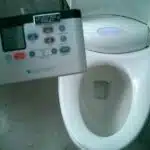
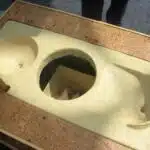
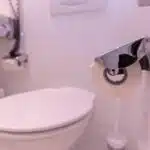




![How To Get Hair Out Of A Bathtub Drain 12 2/365 [Bathtub Drain]](https://green-life.blog/wp-content/uploads/2023/05/cOEu5edpkejq-150x150.jpg.webp)
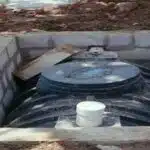
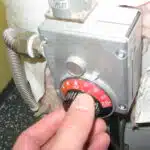




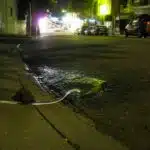


![How To Replace A Bathtub Drain In A Mobile Home 22 2/365 [Bathtub Drain]](https://green-life.blog/wp-content/uploads/2023/05/3ft8KAJsNnjq-150x150.jpg.webp)




